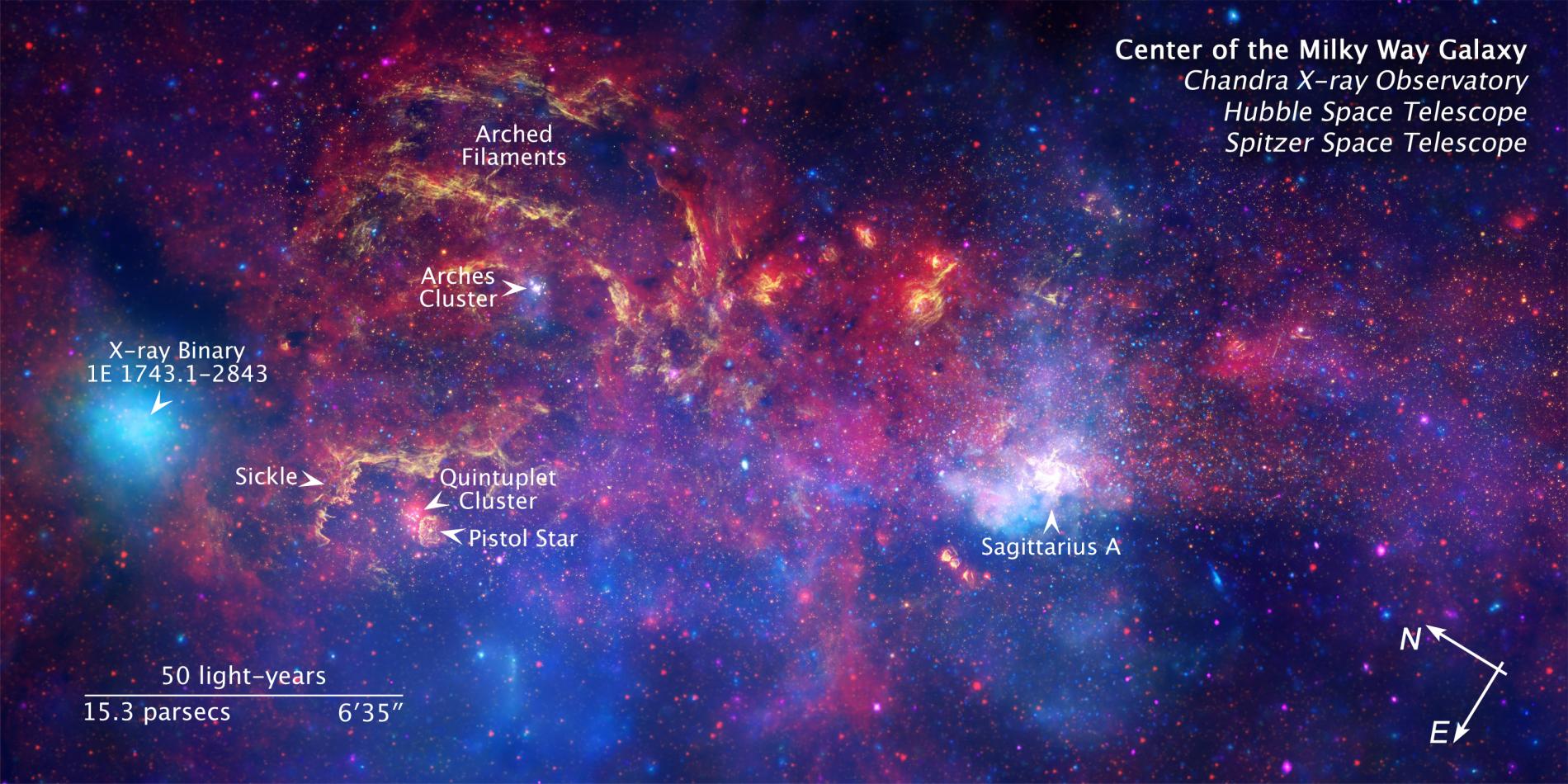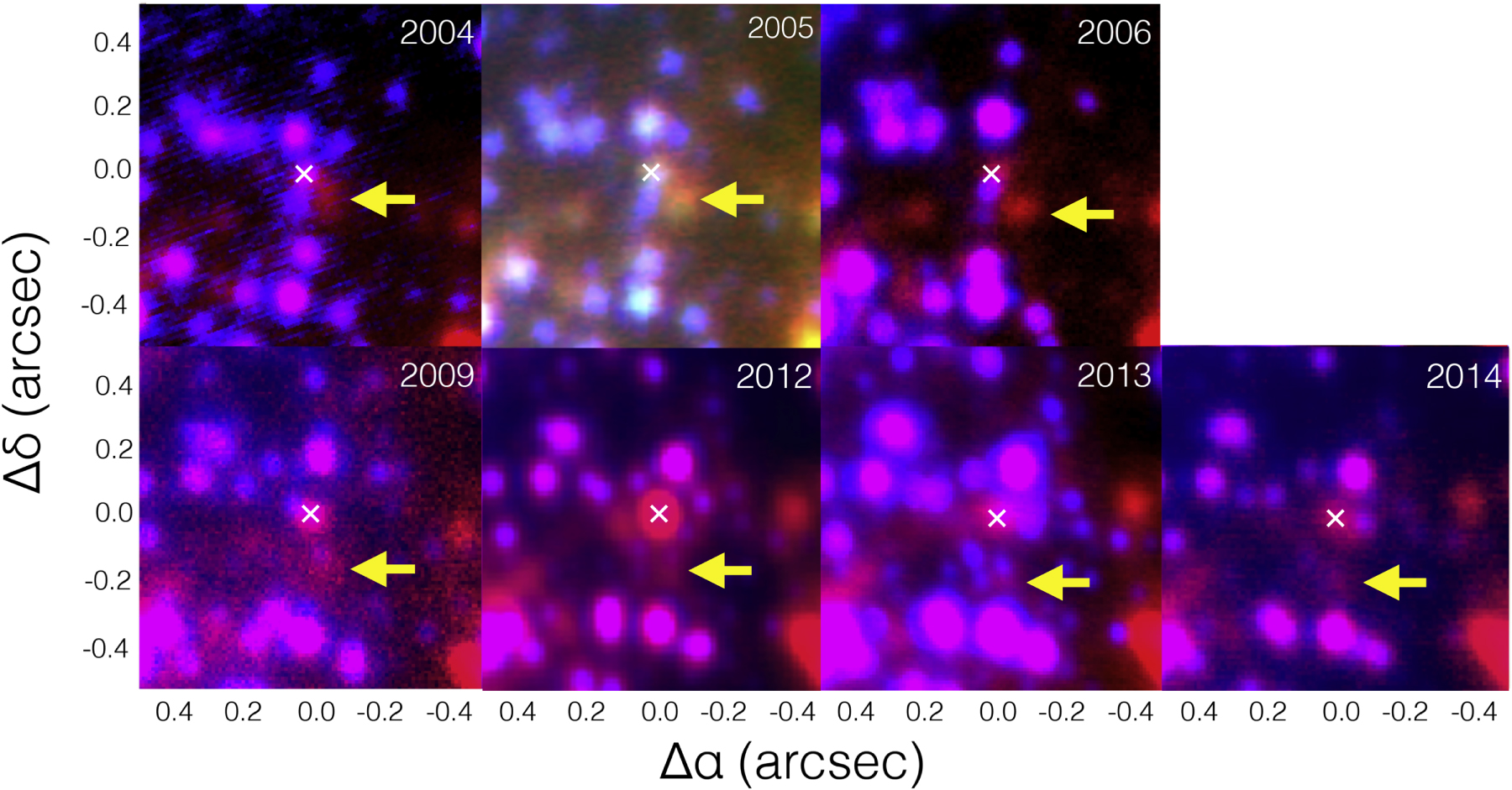The strange objects at the center of our galaxy: clouds of gas that behave like stars
They could be stars blowted by the extreme gravity conditions around Sagittarius A *, the supermassive black hole at the galactic center. The results obtained on three of these objects after eleven years of observations with the Keck telescope (Hawaii) have been presented at the meeting of the American Astronomical Society (AAS)
The center of our galaxy is an extreme environment, and not only because of Sagittarius A*, the central supermassive black hole, but also because the density of stars in the central region can reach ten million times that of the solar neighborhood. An international group of astronomers, in which the Institute of Astrophysics of Andalusia (IAA-CSIC) participates, has presented its results on a strange group of objects that seem to be halfway between the stars and the gas clouds.
"We started this project thinking that if we carefully analyzed the complicated structure of gas and dust near the supermassive black hole of the Milky Way we could detect some subtle changes in its shape and speed. To our surprise, we detected several objects that have very characteristic movements and features, which place them in the class of G objects, or dusty stellar objects, " says Anna Ciurlo, a researcher at the University of California (UCLA) who heads the project.

These three new objects - called G3, G4 and G5 - that move extremely fast and close to the black hole, are interesting because they resemble G1 and G2, found in 2004 and 2012. "It was thought that G1 and G2 were clouds of gas until they had their closest approach to the black hole and, against all odds, they were not destroyed. For this reason it was concluded, in previous works, that they were stars covered with dense gas and dust envelopes," says Rainer Schödel, researcher at the Institute of Astrophysics of Andalusia (IAA-CSIC) that participates in the project.
It is believed that these G objects constitute "inflated" stars, or stars that, due to the tidal forces of the black hole, release matter from their atmospheres but retain an intact stellar core. "The question is, then, why are they so large?" Asks Anna Ciurlo (UCLA).
The group of researchers believes that these G objects are the result of stellar mergers, where two stars that revolve around a common center (known as binary stars) collide and merge due to the gravitational influence of Sagittarius A *. As a result, the resulting object would be "inflated" for a long period of time, up to one million years, before settling and acquiring the appearance of a normal star.
Astronomers will follow the dynamic evolution of these objects, and will pay special attention during their maximum approach to the supermassive black hole, which will reveal its nature in a definitive way. "This finding shows that, despite decades of study, the environment of the supermassive black hole at the center of the Milky Way can continue to surprise us," concludes Schödel (IAA-CSIC).
This research is conducted through a collaboration between Randy Campbell at the W.M. Keck Observatory, members of the Galactic Center Group at UCLA (Anna Ciurlo, Mark Morris, and Andrea Ghez) and Rainer Schoedel of the Institute of Astrophysics of Andalusia (CSIC) in Granada, Spain.

Instituto de Astrofísica de Andalucía (IAA-CSIC)
Unidad de Divulgación y Comunicación
Silbia López de Lacalle - sll[arroba]iaa.es - 958230532
http://www.iaa.es
http://www-divulgacion.iaa.es

